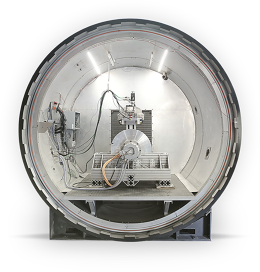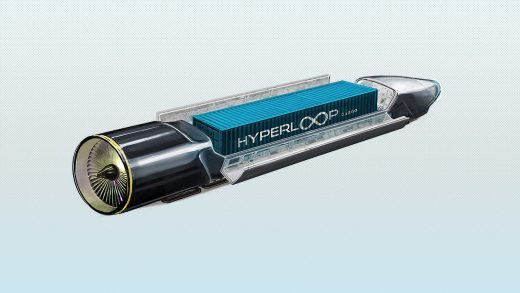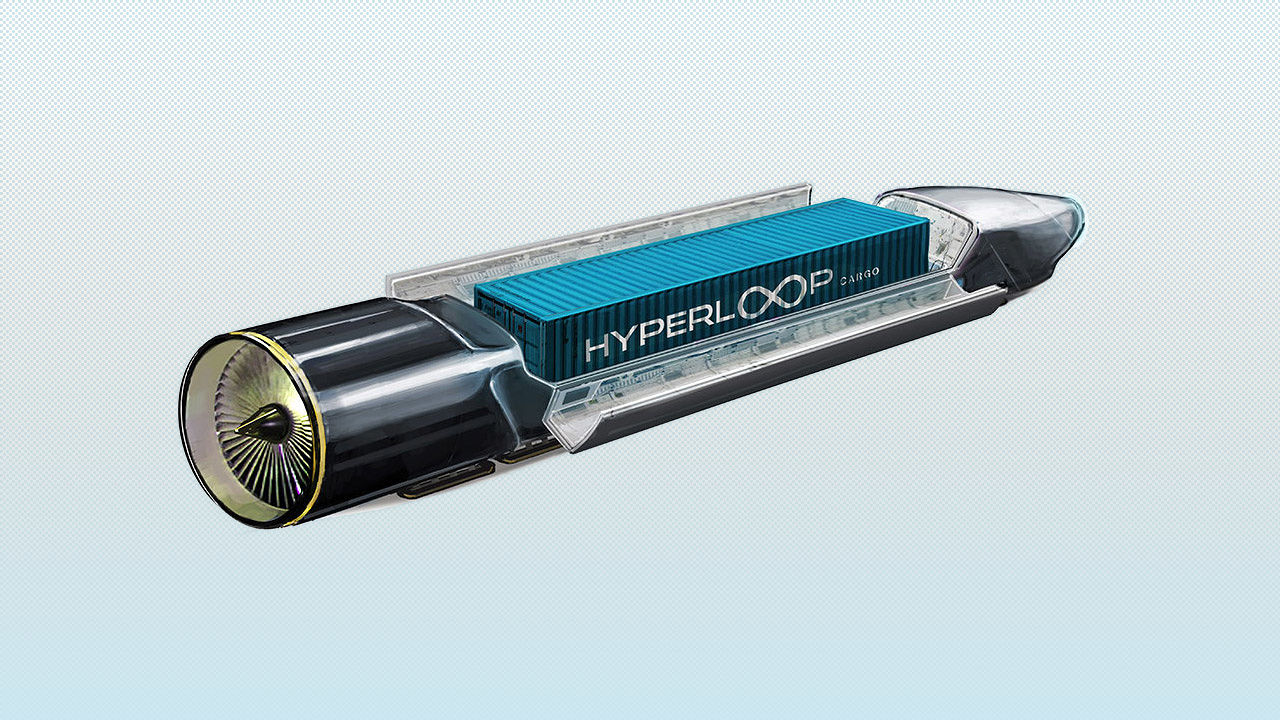Here Comes Hyperloop One: Startup Raises $80 Million
The Hyperloop—a futuristic magnetic levitation transportation system that promises to make it possible for people or cargo to travel at 750 miles an hour in comfortable pods between San Francisco and Los Angeles in as little as 30 minutes—could be very big business.
Got doubts? Look at Hyperloop One, which today announced an $80 million Series B round of financing, as well as a series of partnerships with global leaders in industries like transportation, engineering, architecture, passenger and freight economics, and tunneling. It also said it has changed its name from Hyperloop Technologies. In total, the 150-person company founded by early Uber investor Shervin Pishevar and Brogan BamBrogan, a former SpaceX engineer, has now raised $100 million.
Just 16 months ago, the company was operating out of BamBrogan’s garage.
The ultimate promise of the technology? That it brings a digital revolution sensibility to transportation. It’s immediate, safe, efficient, and sustainable, said BamBrogan—delivering passengers or cargo at the speed of an airplane, but also city-center to city-center in regional areas.
“We need to do for the movement of things, people, of cargo,” said Hyperloop One CEO Rob Lloyd, “what high speed networks did for the first two decades” of the Internet era.
The funding and name change news come a day ahead of a big test of Hyperloop One’s technology, which it will do in front of invited press at an undisclosed location in the desert outside Las Vegas. At a press event in Vegas, BamBrogan said Hyperloop One will be running full-system, full-scale tests by Q4 of this year.
However, the company isn’t making predictions for when it would unveil operational Hyperloops.
“Join us as we conduct our very first propulsion open air test,” Hyperloop One wrote in its press invite. “This will be our most substantial engineering test to date, on our way to realizing the full potential of the Hyperloop system.”
The concept of the Hyperloop belongs, of course, to Elon Musk. As if being the CEO of both Tesla and SpaceX, as well as the chairman of Solar City and a cofounder of PayPal, wasn’t enough, Musk in 2013 sent shockwaves through the tech world by introducing his idea for the Hyperloop, “a fifth mode after planes, trains, cars, and boats” based on a “low pressure tube with capsules that are transported at both low and high speeds throughout the length of the tube [and which are] supported on a cushion of air, featuring pressurized air and aerodynamic lift.”

In addition to its funding and company name news, Hyperloop One also announced plans for a global challenge in which individuals, companies, and governments can submit proposals for using its technology for different “transport corridors” around the world. The ideas that “best demonstrate the transformative power of Hyperloop and are most likely to gain government, financial, and regulatory support” will gain access to Hyperloop One’s “expertise and ecosystem.”
These developments come a day after the company’s chief competitor, Hyperloop Transportation Technologies, revealed it has inked a deal to license Lawrence Livermore Labs’ passive magnetic levitation system, which it touts as a “cheaper, safer alternative to…active magnetic levitation systems,” in part because it will obviate a need for expensive power stations along the track.
For its part, BamBrogan said Hyperloop One has been running passive magnetic levitation in different form factors for six months.
He also insisted that the company could build Hyperloop today, but that it would be too expensive. The goal is to drive the cost down dramatically by making each component system more efficient. “We want to deliver it at a cost basis,” BamBrogan said, “that is absolutely transformative.”
Hyperloop One is funded with venture capital and has internal research-and-development, engineering, and materials organizations, Hyperloop Transportation Technologies is running a crowdfunding model, with time and money being donated by universities and others. Both companies are based in Los Angeles. Hyperloop One clearly believes that its model, as a traditional company developing its own systems, gives it a big advantage over one that is licensing others’ technology and relying on donated time and expertise.
A third company, SkyTran, has patented a “high-speed, elevated, levitating, energy-efficient” transportation system.
While Musk introduced the Hyperloop concept to the world, neither he nor any of his companies are directly involved in the race to build working Hyperloop systems. However, SpaceX wants to help inspire the development of the technology, and is putting its money where its mouth is by constructing a one-mile demonstration track near its Hawthorne, California headquarters where independent engineering teams can test their “human-scale pods” sometime this summer. SpaceX intends to open-source the knowledge gleaned from that event.
Though the idea of sending pods between cities like San Francisco and Los Angeles in half an hour, versus a six-hour drive, or between L.A. and Denver in an hour, is attractive, there are doubts such systems will ever become a reality. In California, for example, there are worries about earthquakes and how anyone could build the required network over a morass of public and private land.
There’s also the matter of cost: It’s estimated that the price tag for a working San Francisco to Los Angeles Hyperloop system could top $6 billion. No one has yet stepped up with the cash for that. There has been speculation that if Hyperloop does ever become real, it will be built in places like Asia or the Middle East with less regulation and cheaper land.
Still, the fact that investors like Sherpa Ventures, Khosla Ventures, GE Ventures, and others, have put $100 million into Hyperloop One, is a clear sign of optimism that the technology could become reality sooner rather than later.
Update 5/11/2016 2:40 p.m.: Hyperloop One completed its first test of the propulsion system in the desert north of Las Vegas this morning. See the video and read more.
Fast Company , Read Full Story
(21)














